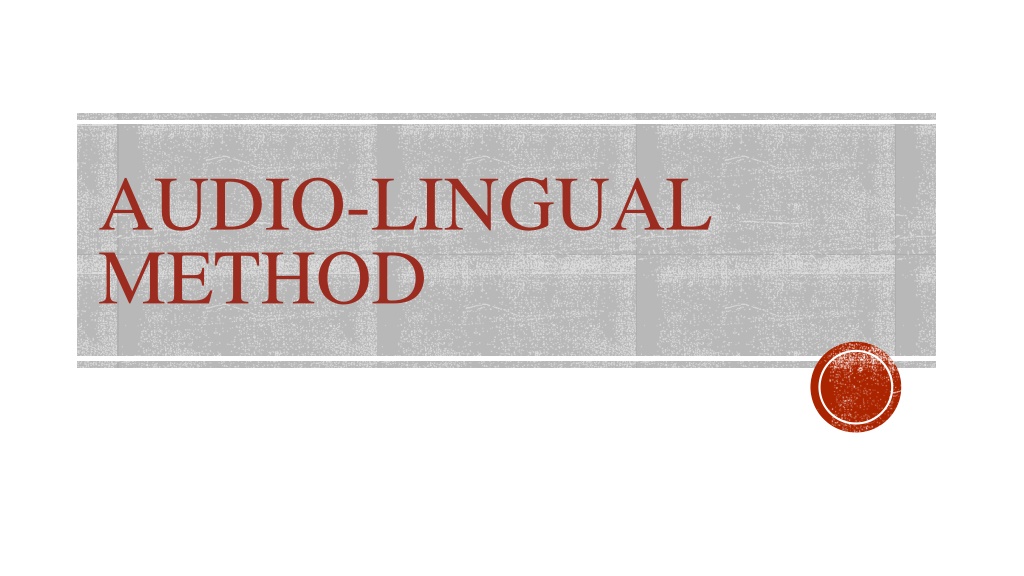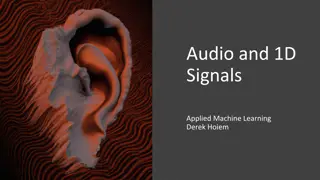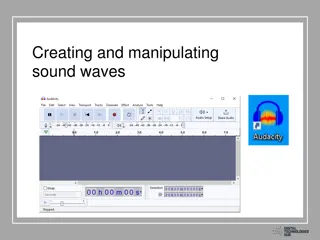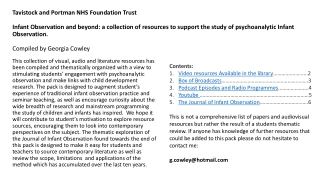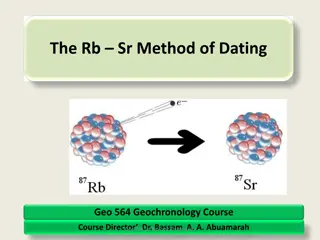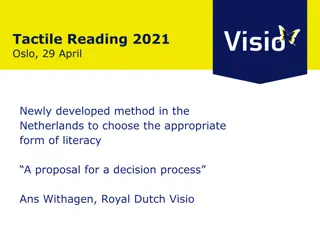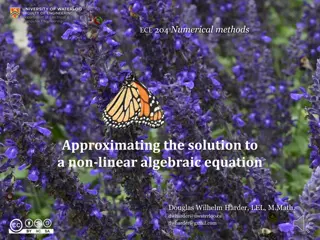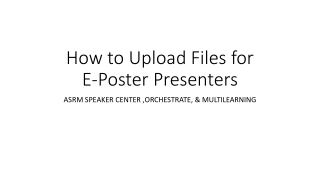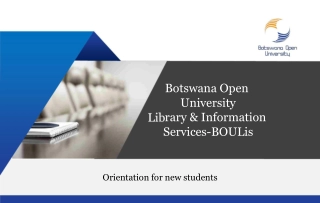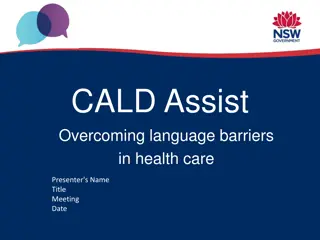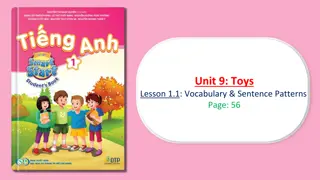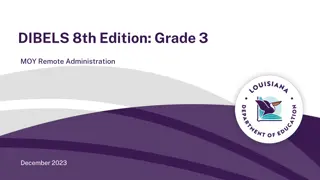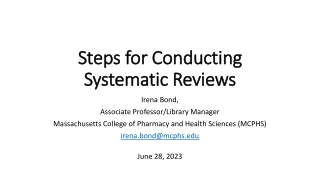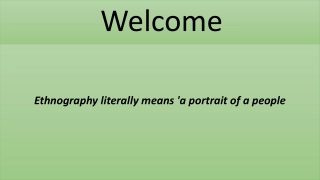AUDIO-LINGUAL METHOD.
Originating during World War II, the Audio-Lingual Method, also known as the Aural/oral approach, focuses on oral proficiency in language learning. Teachers aim for students to use the target language communicatively by overlearning it, forming new habits while overcoming old ones. The method involves structured dialogues, imitation, repetition, and minimal grammar explanations. Students interact through drills and dialogues under the teacher's guidance.
Download Presentation
Please find below an Image/Link to download the presentation.
The content on the website is provided AS IS for your information and personal use only. It may not be sold, licensed, or shared on other websites without obtaining consent from the author. Download presentation by click this link. If you encounter any issues during the download, it is possible that the publisher has removed the file from their server.
- Audio-Lingual Method
- Language Learning
- Oral Proficiency
- Structured Dialogues
- Teacher-Student Interaction
Presentation Transcript
AUDIO-LINGUAL METHOD
HISTORY OF ALM The Audio-Lingual method of teaching had its origins during World War II when it became known as the Army Method. armies needed to become orally proficient in the languages of their allies and enemies as quickly as possible. It is also called the Aural/oral approach. It is based on the structural view of language and the behaviorist theory of language learning.
WHAT ARE THE GOALS OF TEACHERS WHO USE THE AUDIO-LINGUAL METHOD? Teachers want their students to be able to use the target language communicatively. In order to do this, they believe students need to overlearn the target language, to learn to use it automatically without stopping to think. Their students achieve this by forming new habits in the target language and overcoming the old habits of their native language.
WHAT IS THE ROLE OF THE TEACHER? WHAT IS THE ROLE OF THE STUDENTS? The teacher is like an orchestra leader, directing and controlling the language behavior of her students. She is also responsible for providing her students with a good model for imitation. Students are imitators of the teacher s model or the tapes she supplies of model speakers. They follow the teacher s directions and respond as accurately and as rapidly as possible.
WHAT ARE SOME CHARACTERISTICS OF THE TEACHING/LEARNING PROCESS? New vocabulary and structural patterns are presented through dialogues. The dialogues are learned through imitation and repetition. Drills (such as repetition, backward transformation, and question-and-answer) are conducted based upon the patterns present in the dialogue. build-up, chain, substitution, Grammar is induced from the examples given; explicit grammar rules are not provided..
WHAT ARE SOME CHARACTERISTICS OF THE TEACHING/LEARNING PROCESS? Drills are used to teach structural patterns Set phrases are memorized with a focus on intonation Grammatical explanations are kept to a minimum Vocabulary is taught in context Audio-visual aids are used Focus is on pronunciation Correct responses are positively reinforced immediately
WHAT IS THE NATURE OF STUDENTTEACHER INTERACTION? WHAT IS THE NATURE OF STUDENT STUDENT INTERACTION? There is student-to-student interaction in chain drills or when students take different roles in dialogues, but this interaction is teacher-directed. Most of the interaction is between teacher and students and is initiated by the teacher.
HOW ARE THE FEELINGS OF THE STUDENTS DEALT WITH? There are no principles of the method that relate to this area.
HOW IS THE LANGUAGE VIEWED? HOW IS CULTURE VIEWED? The view of language in the Audio-Lingual Method has been influenced by descriptive linguists. Every language is seen as having its own unique system. The system comprises several different levels: phonological, morphological, and syntactic. Each level has its own distinctive patterns Everyday speech is emphasized in the Audio-Lingual Method.. Culture consists of the everyday behavior and lifestyle of the target language speakers.
WHAT AREAS OF LANGUAGE ARE EMPHASIZED? WHAT LANGUAGE SKILLS ARE EMPHASIZED? Vocabulary is kept to a minimum while the students are mastering the sound system and grammatical patterns The natural order of skills presentation is adhered to: listening, speaking, reading, and writing. The oral/aural skills receive most of the attention. What students write they have first been introduced to orally. Pronunciation is taught from the beginning, often by students working in language laboratories on discriminating between members of minimal pairs.
WHAT IS THE ROLE OF THE STUDENTS NATIVE LANGUAGE? The habits of the students native language are thought to interfere with the students attempts to master the target language. Therefore, the target language is used in the classroom, not the students native language. A contrastive analysis between the students native language and the target language will reveal where a teacher should expect the most interference.
HOW IS EVALUATION ACCOMPLISHED? The answer to this question is not obvious because we didn t actually observe the students in this class taking a formal test. If we had, we would have seen that it was discrete-point in nature, that is, each question on the test would focus on only one point of the language at a time. Students might be asked to distinguish between words in a minimal pair, for example, or to supply an appropriate verb form in a sentence.
HOW DOES THE TEACHER RESPOND TO STUDENT ERRORS? Student errors are to be avoided if at all possible, through the teacher s awareness of where the students will have difficulty, and restriction of what they are taught to say.
THE TECHNIQUES Dialogue Memorization Backward Build-up (Expansion) Drill Repetition Drill Chain Drill Single-slot Substitution Drill Multiple-slot Substitution Drill
THE TECHNIQUES Transformation Drill Question-and-answer Drill Use of Minimal Pairs Grammar Game
